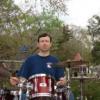
Posted
I´m very pleased of sharing with you the album that you can listen in (http://www.hispasonic.com/codetronx/albums)
The webpage is in spanish language, but that's not a problem.
The most of the compositions have been created totally or partially with the help of HN2, so it is only right to make you know.
Thank you for this incredible tool and enjoy.
Fri, 2012-03-23 - 19:17 Permalink
Really, there's no standard workflow.
Sometimes I start with a single melody
line directly recorded from midi keyboard that it´s harmonized. Or
initially I make a chord progression in the palette, copy to the
song, load some phrase from library or import midi pattern as basis
and record a melody. Even, I've loaded some phrase and changed
interpretation to get a melody line, changing the presets, the
variation template, the rhythm or stretching it, copy/paste 2 or 4
bars... The capabilities allow infinite combinations.
Also, after a first harmonization of
the recorded melody, I've made a second one but this time of the
rendered notes, and tried different suggested chords; or in a new
section used harmonization in a new scale.
In some tracks, I've copied/paste some
instrument, applied a weak variation, transposed and arranged the
instrument range. This way I got a harmony voice.
Always I create an instrument with
auto-chords. When exported to midi file, in the DAW, this track can
be used as arpeggiated source for a left hand piano, picking guitar,
bass line, synth lead or can be an ambient pad, string and brass
tracks... And if it's not used definitively, I erase it. But I like
to have in the midi file, often is useful.
I've also been experimenting with some
exotic scales (oriental, arabic...) and the behaviour of HN2 chord
palette with these scales and the rendering process of notes applying
changes of vertical scale in some bars.
And finally, export to midi files for
the last arrangements in the DAW.
The most of the time, the final
track is quite different from the initial one I had in mind.
The very best tip is to play around the
parameters and options.
Sat, 2012-03-24 - 13:58 Permalink
Very nice work... Perhaps you could discuss how you created one of the pieces, is it all in HN2, or didyou use a DAW ?
I usually have to edit in the DAW after exporting to midi. I have to modify tempo changes, some notes, delete or add pedals... HN2 has not the desired accuracy (is "algorythmic"), and it's a very good starting point; but music, as you know, has a little bit of mathematics plus a lot of sensibility that no software can replace.
However, listen to the track "Piano girl". This track is about 95 % pure HN2 or more, with minimum editing (tempo changes and pedals). It's recorded directly in HN2 with two instruments: right hand and left hand; both assigned to 2 independent channels but the same instrument, and after export, merged into a one and only track in the DAW.
Sat, 2012-03-24 - 18:40 Permalink
Awesome music you have made ..worldmusic is so pure
Interesting to learn from you how you made your compositions..thanks for that
No there is no standarized workflow , but for the song you start with a melody or chords as startingpoint for your composition
Sometimes I start with a single melody
line directly recorded from midi keyboard that it´s harmonized
Well i try to record with my midi keyboard a melodyline, but i get stuck in the recordingprocess in HN2..SOLVED
Also, after a first harmonization of
the recorded melody, I've made a second one but this time of the
rendered notes, and tried different suggested chords; or in a new
section used harmonization in a new scale.
First you have a take ( recorded melody with a existing chord progression default on Cmaj in the progressioneditor)
So it is important in what key you will record this melody ..is this influenced by a start note of the melody and existing chord progression?
But a "take" (without harmony) is transformed in a "figure"( with harmony) and this figure with existing harmony is than loaded again in the harmonizer where you chance the harmonization ?
This is than a "rendered"melody ?
It is confusing : take , figure and rendered notes and their relations between them
Sat, 2012-03-24 - 21:05 Permalink
First you have a take ( recorded melody with a existing chord progression default on Cmaj in the progressioneditor)
Yes, but we don´t need a chord progression. I play the keyboard (and I badly do, believe me) but I only need a "skeleton". Then in the harmonizer tab I can choose from multiple keys that fit that "skeleton". Then click harmonize and apply. You can also try to change some options (resolution, shortest, match neighborhood, and so on...)
So it is important in what key you will record this melody ..is this
influenced by a start note of the melody and existing chord progression?
Not very important. Of course, it influences the global keys you can use later, but you will have quite keys to choose.
But a "take" (without harmony) is transformed in a "figure"( with
harmony) and this figure with existing harmony is than loaded again in
the harmonizer where you chance the harmonization ?
Not loaded again exactly. Once you have harmonized the take, if you click "Rendered notes" and click Harmonize and Apply again, you can get a richer harmonization that sometimes fits better.
Sat, 2012-03-24 - 23:30 Permalink
Also, after a first harmonization of
the recorded melody, I've made a second one but this time of the
rendered notes, and tried different suggested chords; or in a new
section used harmonization in a new scale.
You can harmonize a recorded melody and get a chordprogression advice on 2 ways in the harmonizer if i understand it now.
Suppose your melody is in the key Cmaj and the first chord is a C maj than you can also chance the chordprogression and start with a chord suggestion for the first chord
The mainmovement in functional harmony is Tonica-subdominant- Dominant - Tonica ..so there a different ways to build up chordprogression with substitutions, secondairy dominants , etc
So there is a certain control and with the pallete you can freeze the chords and ask for the best contination chord
Perhaps a little bit to detailled to build up a song ?
Sun, 2012-03-25 - 13:23 Permalink
Yes , really that should Cognitone be doing, because the current video about making a song is too limited.
Codetronx@ has as startingpoint a melody where he fits a chordsprogression or the other way around a chordprogression where he fits a melody.
Perhaps that Codetronx can add a video to show all aspects of his workflow for songcomposition in HN2?
I like to see also more instruments than 8 in HN2 right now that is also too limited
Mon, 2012-03-26 - 22:20 Permalink
Perhaps that Codetronx can add a video to show all aspects of his workflow for songcomposition in HN2?
Sorry, but I have no resources (video caption and edition) in the PC. But, I can try to replace them...
I know it's not a "topic" post, but if it can help you and make you smile... well done.
Wed, 2012-03-28 - 21:15 Permalink
i just read your post and will study it the next days
I am suprized because i know now why my harmonization does not work - it works with a chord progression and melody together like you do it by hand..HN2 comes not with new the chords when you use alone a melody
Thanks very much for the short tutorial ! ..very useful for me.
So Finally some time.. ( mostly no time shortage, but the last few days not )
Note : you have used a device file for a VSTi ..what Vsti do you have used ?
At the moment i cannot hear your songexample with the sound what you had in mind for it
Wed, 2012-03-28 - 22:50 Permalink
Yes your tutorial is useful, but it is difficult to follow what your are exactly doing with all those different songfiles
Also th e coloring of the progression in the progressioneditor of HN2 i don't understand
I will look for that in the manual again and this kind of information should be present in a tutorial by Cognitone
It is like selling a sportscar without a steeringwheel..haha .. i know that the people from Cognitone are humorous and like to laugh
Wed, 2012-03-28 - 23:07 Permalink
About coloring, check this: in the progression editor, after opening final.cogson, go to the bottom and select "Scale selection preferences", choose Traditional, Alternative or Strict, and next press Apply; from the list try different combinations and see color changes depending of your selection, but don´t forget to listen how it influences the rendered music.
Thu, 2012-03-29 - 12:25 Permalink
OK, you start with a E minor in section A and A major scale in section B with a traditional scale preference and your advice is to use the other two remanining scale preferences too.
Thanks for this advice!
The chord coloring from the pallette and progressioneditor in HN2 are not related
But the keys coloring in the circle of fifth and the progressioneditor are the same
For section A it seems that there are 3 chords who are not belonging to the Eminor key
What share all those chords in common ?...the root tone only i think .. when the coloring is different than from the horizontal key ( there is also a global key too) than the chords belong to another key ( vertical scale )
The vertical key notation seems to me neccessary to get the chords who are not belonging to a key
Therefore it should be handy to see from a random scale what chords are belonging to that key and the same coloring for the chords that belong to the same key is good working visual aid.
For section B there is a global key of Amajor , but the coloring is for the local key and when the coloring between the chords is different than the scales are not related
Ok i can use two different scale alternatives an listen if this gives a better sounding chordprogression.
If the chord coloring is much different in the progression editor and it sounds good what says the coloring than?
I try to give meaning to the different coloring in the chord progression ?
Perhaps you can say if the coloring is different than it is likely to get there a not good sounding transition of the chordprogression and in what degree has the coloring difference to do with a chordtransition?
If the colordifference is too big than you get there a modulation or is this not the case because the global key is the same for the chord progression or is this locally not the case for the chords who are have big difference in coloring?
The practical use that the progression sounds as you like, but the problem is how to control this.
Thu, 2012-03-29 - 21:07 Permalink
I must confess that I have no musical formation in a traditional way :teach:. What I've learned I did it by myself (in one hand how to play major and minor chords in a guitar and keyboard, some sus4 and 7th and not much more; on the other hand, reading some book, articles or forums about music forms, or harmony theory I could hardly understand). That's why I needed something like HN2.
Before, I could play chords and make progressions (don´t ask me why but I always started with D or Am :-? ) that sounded good to my ears but I was not able of understanding why some combinations were awesome and some terrible. And I had read about the circle of fifths... and understood the same than I do about the relativity theory :clueless: .Tonic, dominant, subdominant... I asked myself who they were and where they lived.
I got HN2 some months ago and by reading the manual (review pages 36-37 about colors) and seeing the videos I made a longer progress than I've done in years before.
The use of colors in both circle of fifhts and progression editor adds a valuable visual help about how close or far a scale or chords are one from another (I think so). Thus, when changing a vertical scale in a chord, or modifying a chord in the progression, if the color goes quite different, I know that I'm going some steps far away from the "classical path" of the scale, but it doesn't really mean a bad progression. I presume that some sparse rule violations add flavour to the compositions. Sometimes these changes function and you can get interesting results and sometimes they don´t (I could'n live without UNDO command).
Due to my not musician condition, I'm less mentally restricted by the counterpoint, harmony and similar rules. Almost I'm only affected by the "I like" and "I don´t like". I've learned how to modulate from one scale to other using the circle of fifths in a classical way, but we're not always forced to do that.
I mean: trial and error (nowadays less trials and less errors) are still parts of the workflow for me. I'm reading Synfire manual and I've realized that we need that more powerful software if you want to get a more exhaustive control over the rendered results. HN2 has limitations even sharing code (I can't assure) with Synfire. Anyway, we have to assume what HN2 is: an aid to composition, not a composer by itself. Our ears, minds and later edition when necessary have to do the rest.
I'm sorry if I can help the community due to my minimal knowledge of music theory (and english by the way). I do as best I can from a practical point of view as an added value. I appreciate very much the exchange of ideas, suggestions, questions... we are doing. I'm learning from the masters, and what is better, I'm eager to learn.
Thu, 2012-03-29 - 22:48 Permalink
It is good to use HN2 on this way, but you are not mentally restricted by counterpoint or harmony rules
All chord progression you made are possible for analysing in functional harmony terms.
For HN2 using in composing and using than chords it is important that you can control your "musical emotions" by using particular chords ( functional harmony )
So study the primary triads is a good starting point for you
Note: HN2 has also some premade chordprogression to load in the progression editor and uses the notion: function ( example T )(harmonic content) for a chord and in this case a Tonic chord
The Tonic chord is the starting chord on the first note of a scale, but there is a lot of study material to find and i find the books of Michael Hewitt good to study for this purpose.
Here with HN2 to master seems to be a trial and error approach and that is a bad learning strategy and it makes it harder to understand complicated software
Fri, 2012-03-30 - 08:03 Permalink
Thank you for sharing your ideas. I, too find NH2 very helpful in composing. I find myself stuck when I am trying to analize every note. I have been able to create when my ears and mind are open to sounds, and I am not censoring the sounds. Your music sensibility is overpowering the knowledge of music theory! and perhaps that is why your sounds are so appealing to the ear.
Keep on composing!
Fri, 2012-03-30 - 13:18 Permalink
Easy chordprogression constructing in HN2 and not in your DAW ?
It seems to me that a chordprogression recording in your DAW is not necessarry as input for a chordal instrument in HN2
Sufficient is get a phrase of say 8 bars with a Cmaj triad ... this can be serving as a base for any wanted chordprogerssion for a chordal instrument in HN2
So if you load this phrase for 2,4,8,16 and 32 bars ( it can now imported in your own new phrase library ! ) and load this in the progression editor for your desired chord progression.
Because HN2 does make the voice leading for the chord progression..you can see this inthe harmonizer where the "rendered Notes"option stands for the output of the notes ( you can see here the voiceleading for the instruments )
In the instruments& parameter view you see the phrase of the cmajor triad for a chordal instrument as 3 horizontal lines...although the chord progression in the progressioneditor shows the actual chord progression with the chord symbols and in th eharmonizer you see with the rendered notes opton also the actual chords with th evoice leading.
The point is that you don't need to record a whole chord progression in your DAW.. record a Cmajor triad for 8,16 and 32 measures(bars) and load this in the custom library where you can give it a name and store it
I record a Cmajor triad in the instrument¶meter screen also..
Note: Why should i use the palette or chordprogressioneditor? ..on the pallette i can play live the chord with the coloring aid to get the right progression and HN2 and thevoice leading for th echords is done by HN2, in the progression editor i can use my own voice leading by using chordinversions
Still confusing is that the harmonizer can work on 2 levels of harmonizing : recorded takes and rendered notes ?




